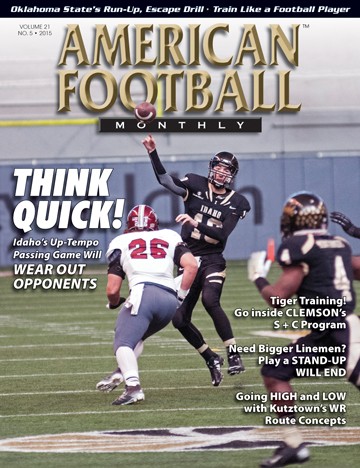Article CategoriesAFM Magazine
|
Speed Report: Pre-Season Conditioning and Speed Training - The Good, The Bad, and The Indifferentby: Dale BaskettFootball Speed Specialist © More from this issue As coaches, we must have a conditioning program in place. But that may not be the truth for everyone. Having the opportunity to work with programs all over the country for many years, Iíve seen a variety of methods used. When the subject comes up about conditioning, one must consider what may be good, bad or just simply indifferent. For some programs conditioning begins in January and ends at the end of fall camp. This constitutes a long series of training for what is termed, conditioning. Some programs condition just during the spring and summer months and, as odd as it may seem, there are programs that donít condition at all. That shines light on the term indifference which, in most cases, thatís thought of as strange. This approach is not conventional to the majority of football programs. However, this concept is use....The full article can only be seen by subscribers.
|
|
|||||||
| HOME |
MAGAZINE |
SUBSCRIBE | ONLINE COLUMNISTS | COACHING VIDEOS |
Copyright 2025, AmericanFootballMonthly.com
All Rights Reserved





